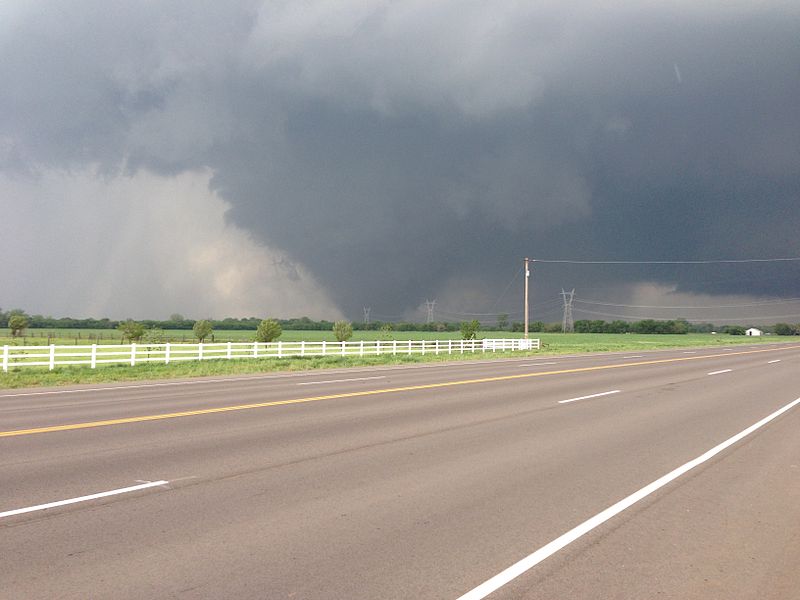
Editor’s Note: I have about 2 terabytes of video content I’ve taken over the last year, and I’ve started going through it backwards in chronological order. This bit of video is of the huge storm that killed 24 people, destroyed 1,150 homes, and tallied up $2 billion in damages – but as it traveled the day after through Illinois.

May 21, 2013 — my wife and I took the afternoon to drive out to film some wind turbines outside of Carlock, Illinois. The sky was fine going to the wind turbine field, but as we were returning back to Peoria it just became black, dark, and sirens were going off everywhere. It wasn’t until the radio did the Emergency Broadcast System noise that I decided to hit the side of the road, where I was able to get about 90 seconds of video of the storm front as it moved across the cornfields.
My video below is not a really dramatic video, but it shows the enormity of this squall line even after slamming into Oklahoma the day before. That storm was moving fast, and it was huge:
A team of “storm chasers” that call themselves Fast Unit 53 captured some footage of the actual EF5 tornado, and their footage was used on KOCO. Their footage is quite stunning, they were literally in front of the cell. The term brass cojones comes to mind…
Be careful out there, amateur storm chasers. Seriously. Tim Samaras, his son Paul, and coworker Carl Young were killed on May 31, 2013 while chasing a tornado in El Reno, Oklahoma, and they were seasoned experts. I know quite a few people who are thrill seekers who think they’re storm chasers. Be smart, give yourself lots of room between you and the twister. From an article at the Associated Press:
Tim Samaras, his son Paul and colleague Carl Young died Friday night when an EF3 tornado with winds up to 165 mph turned on them near El Reno, Okla. After years of sharing dramatic videos with television viewers and weather researchers, they died chasing a storm that killed 13 in Oklahoma City and its suburbs.
“It’s something we’ve done countless times in the past and have done it successfully and safely,” said Tony Laubauch, who was working with Tim Samaras’ chase team Friday night. “And, you know, whatever happened on this one, it’s just horrible beyond words.”
The men’s deaths in pursuit of the storm are believed to be the first among scientific researchers while chasing tornadoes, the Storm Prediction Center in Norman, Okla., said. “They put themselves in harm’s way so that they can educate the public about the destructive power of these storms,” said Chris West, the undersheriff in Canadian County, where the men died.
Tim Samaras, 54, of Bennett, Colo., had a reputation for being safe but was trapped on the highway with his son, Paul Samaras, 24, also of Bennett, and Young, 45, who taught geology at Lake Tahoe Community College in South Lake Tahoe, Calif.
“I don’t know if I would say I worried about it because one of the biggest things he stressed was safety,” said Tim’s brother, Jim Samaras, who confirmed the deaths to The Associated Press. “He knew what to look for. He knew where not to be and in this case, the tornado took a clear turn toward them.”
Tim Samaras and his Twistex tornado chase team produced material for the Discovery Channel, National Geographic and meteorological conferences.
“He looked at tornadoes not for the spotlight of TV but for the scientific aspect,” Jim Samaras said. “At the end of the day, he wanted to save lives and he gave the ultimate sacrifice for that.”
The Oklahoma storm that killed the three chasers developed right in front to them. Tim Samaras tweeted a photo of clouds rising through a volatile atmosphere and noted: “Storms now initiating south of Watonga along triple point. Dangerous day ahead for OK – stay weather savvy!”
It was his final tweet.




